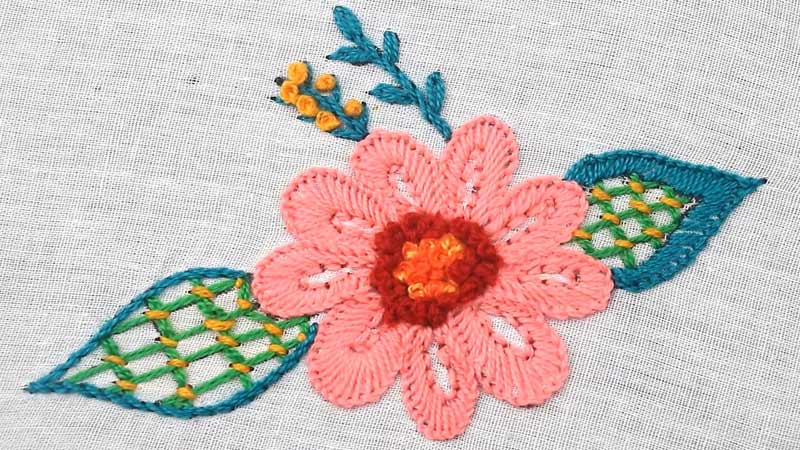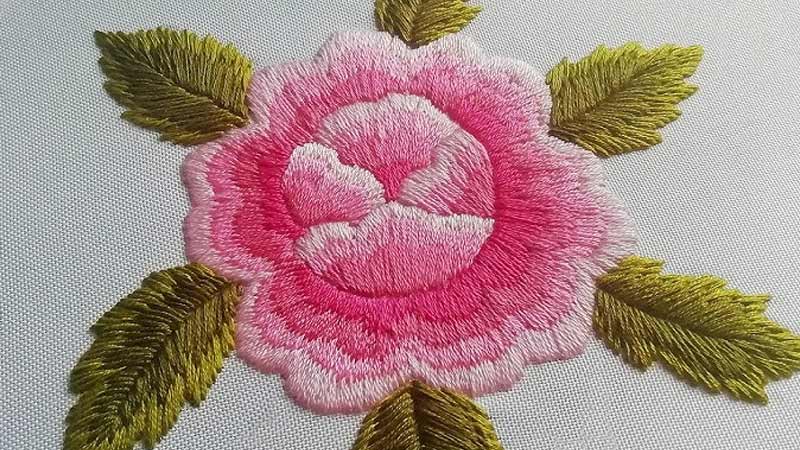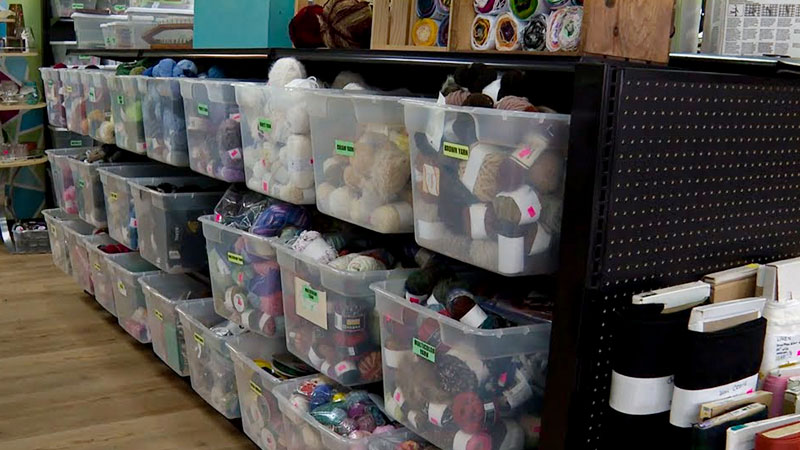Embarking on the restoration journey of Mexican embroidery demands a meticulous understanding of the threads that breathe life into this intricate art form.
Choosing the right thread for repairing Mexican embroidery involves a delicate balance between texture, color, and authenticity.
This process entails selecting threads that harmonize with the fabric type, match the original color palette, and adhere to the stitch thickness of the masterpiece.
Whether it’s the vibrant Otomi or the finely detailed Tenango, the choice of thread plays a pivotal role in seamlessly resurrecting these cultural treasures.
In this exploration, we delve into the nuanced considerations guiding the selection of threads to breathe renewed vitality into Mexican embroidery.

What Is Mexican Embroidery?
Mexican embroidery is a traditional and vibrant handcraft originating from Mexico, characterized by intricate stitching on fabrics like cotton, silk, or wool.
Renowned for its bold colors, diverse motifs, and cultural richness, Mexican embroidery features floral patterns, animals, and geometric designs. Utilizing stitches such as satin and cross-stitch, each region showcases distinct styles, such as Otomi and Tenango.
A reflection of Mexico’s cultural heritage, this art form adorns clothing, accessories, and home decor, serving as a visual expression of history, tradition, and identity while continuing to captivate with its timeless beauty and artistic significance.
What Kind of Thread to Repair Mexican Embroidery?
Repairing Mexican embroidery involves selecting the appropriate thread to ensure a seamless restoration that respects the cultural and artistic nuances of the original piece.
Here’s a guide on what kind of thread to use:
Fabric Compatibility
Match the thread material to the fabric of the original embroidery. If the piece is on cotton fabric, opt for cotton thread; for silk, choose silk thread. This ensures a harmonious blend in texture.
Color Consistency

Select a thread color that closely matches the original embroidery. Aim for color harmony by using a color chart or wheel. If an exact match isn’t available, choose a shade that complements the existing colors.
Thickness Matching
Consider the thickness of the original embroidery thread. Whether it’s OK or thick, strive to match the thread thickness to maintain the overall aesthetic and feel of the piece.
Stitch Type Adaptation
Take into account the stitches used in the original work. Choose a thread suitable for the specific stitch type, ensuring that the repaired section seamlessly integrates with the rest of the embroidery.
Quality Assurance
Opt for a high-quality thread to guarantee durability. High-quality threads are less prone to fraying or breakage, ensuring that the repaired embroidery withstands the test of time.
Where Can You Find Thread for Mexican Embroidery?
Finding thread for Mexican embroidery can be done through various sources, both online and offline. Here are some places where you can see thread suitable for Mexican embroidery:
Online Shops
Numerous online stores specialize in Mexican embroidery supplies. Websites like MexiEmbroidery.com, CasaOtomi.com, and MexiStitches.com offer a wide range of threads in various colors and types. These online shops often provide convenient browsing and ordering options.
Local Craft Stores

Visit your local craft or fabric stores, where you can find a selection of embroidery threads. Staff at these stores may also offer advice on choosing the right thread for your project.
Popular craft store chains or independent fabric shops are likely to have a diverse range of thread options.
Thrift Stores
Explore thrift stores or second-hand shops for old or vintage pieces of Mexican embroidery. Even if you don’t find the exact thread you need, you might discover unique colors or patterns that are no longer available in modern shops.
Salvaging threads from old embroidery can be a sustainable and cost-effective option.
Your Own Stash
Check your own collection of threads and embroidery supplies. You may have leftover or unused threads from previous projects that could be suitable for repairing Mexican embroidery. This is a budget-friendly option and a chance to use existing resources.
Specialty Embroidery Shops
Specialty embroidery shops or stores that focus on traditional crafts might carry threads specifically tailored for Mexican embroidery. These stores often cater to a niche market and may have a curated selection of threads suitable for different embroidery styles.
Craft Fairs and Markets
Attend local craft fairs, artisan markets, or cultural events where vendors may sell handmade or specialty threads. This can be an opportunity to find unique and authentic threads that are not commonly available in mainstream stores.
Embroidery and Needlework Events
Events dedicated to embroidery and needlework may feature vendors offering a variety of threads. Attendees can explore different options and even seek advice from experts on the best threads for specific embroidery projects.
Social Media and Online Communities
Join online embroidery communities or forums on platforms like Instagram, Facebook, or Reddit. Members of these communities often share information about where to find unique threads and may recommend specific online or local suppliers.
How to Repair Mexican Embroidery With Thread? Step-By-Step Guide

Repairing Mexican embroidery with thread involves careful attention to detail and skillful stitching. Here’s a step-by-step guide on how to repair Mexican embroidery:
Tools and Materials Needed
- Needle
- Scissors
- Pins
- Embroidery hoop
- Matching thread for repair
- Original embroidery piece
Steps:
Prepare Your Tools
Gather all the necessary tools, including a needle appropriate for the fabric and stitches, sharp scissors, pins, and an embroidery hoop.
Examine the Damage
Identify the areas that need repair. Look for loose threads, frayed edges, or missing stitches. Take note of the type of stitches used in the original embroidery.
Secure the Fabric in the Hoop
Use pins to secure the damaged area of the fabric in the embroidery hoop. Stretch the fabric taut to create a smooth surface for stitching.
Thread the Needle
Thread your needle with the chosen thread for repair. Knot one end of the thread securely.
Identify Stitches
Examine the original embroidery and identify the type of stitches used. Try to replicate the same stitches as closely as possible for a seamless repair.
Starting the Repair
Insert the needle from the back of the fabric to the front at the edge of the damaged area. Begin stitching, following the pattern of the original embroidery. Ensure your stitches are even and consistent in size.
Fill in Gaps or Holes
If there are gaps or holes in the original embroidery, fill them in with your new stitches. Pay attention to maintaining the original pattern and texture.
Match Thread Thickness
Use a thread that matches the thickness of the original embroidery. If the original work used a fine thread, use a fine thread for the repair. If it used a thicker thread, opt for a thicker thread.
Match Fabric Type
Ensure that the repair thread matches the fabric type of the original piece. For instance, if the original embroidery is on cotton fabric, use a cotton thread for the repair.
Color Matching
Choose a thread color that closely matches the original embroidery. If an exact match is unavailable, opt for a slightly darker or lighter shade.
Continue Stitching
Continue stitching until the damaged area is fully repaired. Be patient and meticulous to achieve a professional-looking result.
Knot and Finish
When you reach the end of the repair, knot the thread securely at the back of the fabric. Trim any excess thread carefully.
Remove from Hoop
Remove the fabric from the embroidery hoop, ensuring there are no wrinkles or creases.
Final Touches
Trim any remaining loose threads and inspect the repaired area. Ensure that the repaired section blends seamlessly with the rest of the embroidery.
Enjoy Your Repaired Mexican Embroidery
Your Mexican embroidery is now repaired and ready to be enjoyed. Whether it’s a cherished garment or a decorative piece, display or wear it with pride.
FAQs
Can I use any thread to repair Mexican embroidery, or does it need to be specific to the craft?
It’s crucial to choose a thread that aligns with the original embroidery. Match the fabric type, color, and thickness for a seamless repair that preserves the cultural and visual integrity of Mexican embroidery.
Are there specialty threads for Mexican embroidery repair, and should I consider them?
Yes, specialty threads like metallic or variegated options may have been used in the original embroidery. Matching these threads adds unique textures and preserves the authenticity of the repair.
Can I find unique or vintage threads for Mexican embroidery repair in thrift stores?
Yes, thrift stores can be treasure troves for finding old or vintage threads. You might discover unique colors or patterns that add a touch of authenticity to your repair project.
Are there variations in Mexican embroidery styles, and should this influence my choice of thread for repair?
Yes, different regions in Mexico have distinct embroidery styles. Considering the regional style of the original piece ensures a culturally sensitive repair, preserving the authenticity of the artwork.
Can I use threads from my existing collection for Mexican embroidery repairs?
Yes, exploring your collection is a cost-effective option. You might find suitable threads or unique colors that can be repurposed for your Mexican embroidery repair project.
To Recap
The artful repair of Mexican embroidery threads weaves a narrative of cultural preservation and artistic continuity.
By meticulously choosing threads that honor the original fabric, color palette, and stitching techniques, one engages in a process that transcends mere restoration. It becomes a celebration of heritage.
The revived embroidery, harmonizing seamlessly with its roots, stands as a testament to the commitment to preserving Mexico’s rich artistic legacy. Each repaired stitch is a thread connecting past and present, a testament to the enduring beauty of this traditional craft.
As we conclude our exploration, may these repaired threads continue to tell the vibrant stories of Mexican culture for generations to come.
Leave a Reply